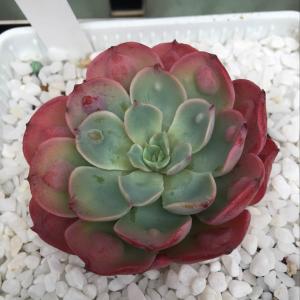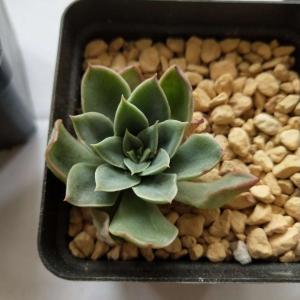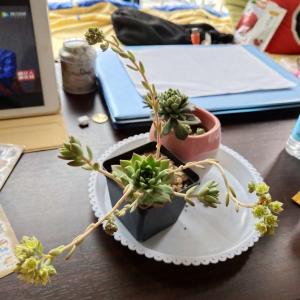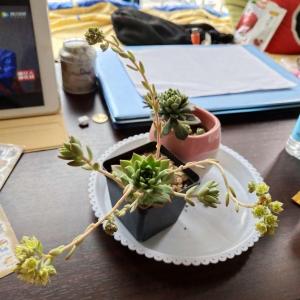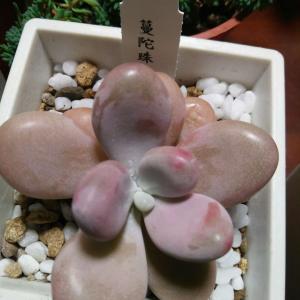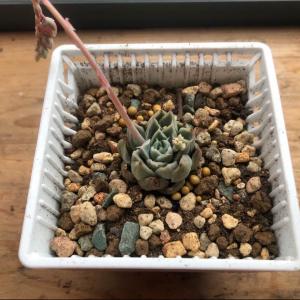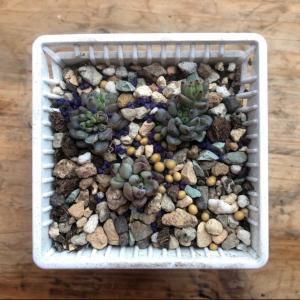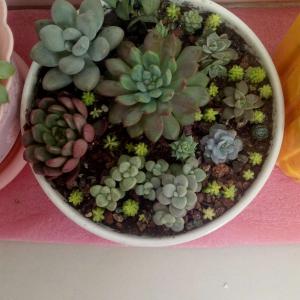文章
Miss Chen
2018年04月05日

Description: This climbing non-woody vine is a herbaceous perennial up to 8' long that branches occasionally. The light green to purple stems are terete, slightly speckled, glabrous, and often glaucous. Alternate leaves up to 3½" long and 2½" across occur at intervals along each stem; they are ovate-oval to broadly ovate-lanceolate in shape, smooth along their margins, and parallel-veined. The upper surfaces of the leaves are medium green and glabrous, while their lower surfaces are pale green and hairless. There are no hairs along the raised veins on the leaf undersides. The petioles of the leaves are up to 1¾" long, light green, and hairless. At the base of most petioles, there is a pair of tendrils that can cling to adjacent vegetation or objects for support. At the base of each stem on the vine, there is an appressed to slightly spreading sheath that is usually bladeless.

Individual umbels of flowers are produced from the axils of the middle to upper leaves of each mature vine. Each umbel is connected to the stem by a long stout peduncle about 4-10" long. The peduncles are 4-8 times longer than the petioles of adjacent leaves; they are similar in appearance to the stems. Individual umbels are about 1½–3" across, consisting of 20-120 flowers on slender pedicels; when fully developed, they are globoid in shape. Like other species in this genus, Smooth Carrion Flower is dioecious; some vines produce only staminate (male) flowers, while other vines produce only pistillate (female) flowers. The green to yellowish green staminate flowers are individually about ¼" across, consisting of 6 lanceolate tepals and 6 stamens with white anthers. The green to yellowish green pistillate flowers are individually about ¼" across, consisting of 6 lanceolate tepals and a pistil with 3 flattened stigmata. The tepals of both kinds of flowers are often recurved. The blooming period occurs from late spring to early summer and lasts about 3 weeks. The flowers often have a carrion-like scent, but itsDistribution Map presence and strength varies with the local ecotype. Staminate flowers wither away after blooming, while pistillate flowers are replaced by globoid fleshy berries. Individual berries are about ¼" across and contain about 3-5 seeds; they are dark blue and glaucous at maturity. At the end of the growing season, the entire vine dies down to the ground.
Cultivation: Smooth Carrion Flower prefers full or partial sun and more or less mesic conditions. It flourishes in different kinds of soil, including those that are rocky or loamy. In a shady situation, this vine may fail to produce flowers.
Range & Habitat: According to official records, Smooth Carrion Flower is rare in Illinois. However, in neighboring states this vine has been found in many counties and it is regarded as more common. It is possible that some records of Smilax lasioneura (Common Carrion Flower) in Illinois are based on misidentifications and it was Smooth Carrion Flower that was observed. These two species are very similar in appearance and easily confused. Habitats of the native Smooth Carrion Flower include savannas, thickets, prairies, rocky upland woodlands, woodland openings, woodland borders, and fence rows. Occasional wildfires appear to be beneficial in managing populations of this species.
Faunal Associations: The flowers are pollinated primarily by small bees, miscellaneous flies, and beetles. Fly visitors include Flesh flies, Blow flies, Muscid flies, Syrphid flies, mosquitoes, and other species. The bees suck nectar or collect pollen, while the flies and beetles suck nectar or feed on pollen. The butterfly Megisto cymela (Little Wood Satyr) has been observed sucking nectar from Carrion Flower as well. Insects that feed on the foliage of Smilax spp. (whether Greenbriers or Carrion Flowers) include the flea beetle Pachyonychus paradoxus, the thrips Ctenothrips bridwelli, and the caterpillars of several moths, including Acrolepiopsis incertella (Carrion Flower Moth), Phosphila miselioides (Spotted Phosphila), Phosphila turbulenta (Turbulent Phosphila), and Phyprosopus callitrichoides (Curve-Lined Owlet). In addition to these species, the caterpillars of Papaipema unimoda (Meadow Rue Borer Moth) sometimes bore into the stems of Carrion Flowers. The berries of Smilax spp. are eaten by some upland gamebirds and songbirds (see the Bird Table); the Ruffed Grouse and Wild Turkey also eat the young leaves and buds of these vines. The berries are a minor source of food to some mammals: this includes the Black Bear, Opossum, Raccoon, Fox Squirrel, and Gray Squirrel. The leaves and stems are browsed by the White-Tailed Deer and Cottontail Rabbit.
Photographic Location: The Loda Cemetery Prairie in the southwest corner of Iroquois County, Illinois.
Comments: Species in the Smilax genus fall into two large groups: woody vines with prickles or bristles (Green Briers, Catbriers) and non-woody vines that are devoid of prickles or bristles (Carrion Flowers). In Illinois, there are 5 species of Carrion Flower that are currently recognized; some of these species were regarded as mere varieties of Smilax herbacea in the past. Smooth Carrion Flower can be distinguished from similar species using one or more of the following criteria: 1) the undersides of its leaves are pale green and totally hairless, 2) its umbel-bearing peduncles are at least 4 times longer than the petioles of adjacent leaves, and 3) it is a climbing or sprawling vine with numerous tendrils. The very similar Smilax lasioneura (Common Carrion Flower) has fine hairs along the veins of its leaf undersides (and sometimes between the veins as well) while its peduncles are less than 4 times the length of the petioles of the adjacent leaves. Another similar species, Smilax pulverulenta (Powdery Carrion Flower), has leaf undersides that are medium green and it also has fine hairs along its veins. The remaining Carrion Flowers in Illinois are shorter vines with an upright habit of growth and they have much fewer, if any, tendrils.

Individual umbels of flowers are produced from the axils of the middle to upper leaves of each mature vine. Each umbel is connected to the stem by a long stout peduncle about 4-10" long. The peduncles are 4-8 times longer than the petioles of adjacent leaves; they are similar in appearance to the stems. Individual umbels are about 1½–3" across, consisting of 20-120 flowers on slender pedicels; when fully developed, they are globoid in shape. Like other species in this genus, Smooth Carrion Flower is dioecious; some vines produce only staminate (male) flowers, while other vines produce only pistillate (female) flowers. The green to yellowish green staminate flowers are individually about ¼" across, consisting of 6 lanceolate tepals and 6 stamens with white anthers. The green to yellowish green pistillate flowers are individually about ¼" across, consisting of 6 lanceolate tepals and a pistil with 3 flattened stigmata. The tepals of both kinds of flowers are often recurved. The blooming period occurs from late spring to early summer and lasts about 3 weeks. The flowers often have a carrion-like scent, but itsDistribution Map presence and strength varies with the local ecotype. Staminate flowers wither away after blooming, while pistillate flowers are replaced by globoid fleshy berries. Individual berries are about ¼" across and contain about 3-5 seeds; they are dark blue and glaucous at maturity. At the end of the growing season, the entire vine dies down to the ground.
Cultivation: Smooth Carrion Flower prefers full or partial sun and more or less mesic conditions. It flourishes in different kinds of soil, including those that are rocky or loamy. In a shady situation, this vine may fail to produce flowers.
Range & Habitat: According to official records, Smooth Carrion Flower is rare in Illinois. However, in neighboring states this vine has been found in many counties and it is regarded as more common. It is possible that some records of Smilax lasioneura (Common Carrion Flower) in Illinois are based on misidentifications and it was Smooth Carrion Flower that was observed. These two species are very similar in appearance and easily confused. Habitats of the native Smooth Carrion Flower include savannas, thickets, prairies, rocky upland woodlands, woodland openings, woodland borders, and fence rows. Occasional wildfires appear to be beneficial in managing populations of this species.
Faunal Associations: The flowers are pollinated primarily by small bees, miscellaneous flies, and beetles. Fly visitors include Flesh flies, Blow flies, Muscid flies, Syrphid flies, mosquitoes, and other species. The bees suck nectar or collect pollen, while the flies and beetles suck nectar or feed on pollen. The butterfly Megisto cymela (Little Wood Satyr) has been observed sucking nectar from Carrion Flower as well. Insects that feed on the foliage of Smilax spp. (whether Greenbriers or Carrion Flowers) include the flea beetle Pachyonychus paradoxus, the thrips Ctenothrips bridwelli, and the caterpillars of several moths, including Acrolepiopsis incertella (Carrion Flower Moth), Phosphila miselioides (Spotted Phosphila), Phosphila turbulenta (Turbulent Phosphila), and Phyprosopus callitrichoides (Curve-Lined Owlet). In addition to these species, the caterpillars of Papaipema unimoda (Meadow Rue Borer Moth) sometimes bore into the stems of Carrion Flowers. The berries of Smilax spp. are eaten by some upland gamebirds and songbirds (see the Bird Table); the Ruffed Grouse and Wild Turkey also eat the young leaves and buds of these vines. The berries are a minor source of food to some mammals: this includes the Black Bear, Opossum, Raccoon, Fox Squirrel, and Gray Squirrel. The leaves and stems are browsed by the White-Tailed Deer and Cottontail Rabbit.
Photographic Location: The Loda Cemetery Prairie in the southwest corner of Iroquois County, Illinois.
Comments: Species in the Smilax genus fall into two large groups: woody vines with prickles or bristles (Green Briers, Catbriers) and non-woody vines that are devoid of prickles or bristles (Carrion Flowers). In Illinois, there are 5 species of Carrion Flower that are currently recognized; some of these species were regarded as mere varieties of Smilax herbacea in the past. Smooth Carrion Flower can be distinguished from similar species using one or more of the following criteria: 1) the undersides of its leaves are pale green and totally hairless, 2) its umbel-bearing peduncles are at least 4 times longer than the petioles of adjacent leaves, and 3) it is a climbing or sprawling vine with numerous tendrils. The very similar Smilax lasioneura (Common Carrion Flower) has fine hairs along the veins of its leaf undersides (and sometimes between the veins as well) while its peduncles are less than 4 times the length of the petioles of the adjacent leaves. Another similar species, Smilax pulverulenta (Powdery Carrion Flower), has leaf undersides that are medium green and it also has fine hairs along its veins. The remaining Carrion Flowers in Illinois are shorter vines with an upright habit of growth and they have much fewer, if any, tendrils.
0
0
文章
Miss Chen
2018年04月05日

Description: This herbaceous perennial plant is 1-2½' tall and unbranched. The central stem is stout, smooth, and zigzags slightly. It usually reclines to the side somewhat, rather than being held stiffly erect with respect to the ground. The alternate leaves are narrowly ovate, with parallel veins and smooth margins. They are up to 6" long and 2" across, and are sessile to the central stem, or have short petioles. The undersides of the leaves may be slightly pubescent.
The central stem terminates in a single inflorescence consisting of small white flowers. This inflorescence is a narrow raceme (almost spike-like) about 1-4" long. Each flower has 6 narrow tepals, 6 stamens with yellow anthers, and a central pistil that is shaped like a vase with a long, narrow neck. When fully open, each star-like flower is about 1/3" across. The blooming period occurs during late spring and lasts about 3 weeks. There is a mild floral fragrance. Each flower is replaced by a small berry about ¼" across. The berries are initially green with purple or black stripes, but later become bright red. The root system consists of stout rhizomes, which form vegetative colonies readily.
Cultivation: This plant prefers moist to slightly dry conditions and partial sunlight. It will also tolerate light shade and full sunlight. It is not particular about soil texture, but often grows in sandy soil in native habitats. Insects and disease are rarely bothersome.

Range & Habitat: Starry False Solomon's Seal occurs occasionally in northern and east-central Illinois; it is uncommon to absent elsewhere within the state (see Distribution Map). This wildflower is native to Illinois. Habitats include sandy prairies, moist meadows in woodland areas, woodland borders, sandy riverbanks and semi-wooded slopes, Black Oak savannas, calcareous seeps, and the shrub zone of sand dunes near Lake Michigan. Among the Smilacina spp. in Illinois, Starry False Solomon's Seal is the most likely to occur in sunny areas, although it usually doesn't stray far from areas with some woody vegetation.
Faunal Associations: The flowers attract Halictid bees (including Green Metallic bees), flower flies, and Tachinid flies primarily. These insects seek nectar or pollen. The berries are eaten by woodland songbirds, including various woodland thrushes and the Veery, as well as the White-Footed Mouse. These animals help to distribute the seeds. Deer often feed on the foilage, cropping the stems to about 6" above the ground.

Photographic Location: The photograph was taken near Busey Woods in Urbana, Illinois.
Comments: Starry False Solomon's Seal has attractive foilage, flowers, and berries. It can be distinguished from Smilacina racemosa (False Solomon's Seal) by the narrower leaves and spike-like inflorescence. The latter plant has a plume-like inflorescence that consists of a spreading raceme. Another plant with similar foliage, Polygonatum biflorum (Smooth Solomon's Seal), has broader leaves that are pale green. However, the flowers of this species occur in pairs underneath the leaves along the stem. Another scientific name for Starry False Solomon's Seal is Maianthemum stellatum.
The central stem terminates in a single inflorescence consisting of small white flowers. This inflorescence is a narrow raceme (almost spike-like) about 1-4" long. Each flower has 6 narrow tepals, 6 stamens with yellow anthers, and a central pistil that is shaped like a vase with a long, narrow neck. When fully open, each star-like flower is about 1/3" across. The blooming period occurs during late spring and lasts about 3 weeks. There is a mild floral fragrance. Each flower is replaced by a small berry about ¼" across. The berries are initially green with purple or black stripes, but later become bright red. The root system consists of stout rhizomes, which form vegetative colonies readily.
Cultivation: This plant prefers moist to slightly dry conditions and partial sunlight. It will also tolerate light shade and full sunlight. It is not particular about soil texture, but often grows in sandy soil in native habitats. Insects and disease are rarely bothersome.

Range & Habitat: Starry False Solomon's Seal occurs occasionally in northern and east-central Illinois; it is uncommon to absent elsewhere within the state (see Distribution Map). This wildflower is native to Illinois. Habitats include sandy prairies, moist meadows in woodland areas, woodland borders, sandy riverbanks and semi-wooded slopes, Black Oak savannas, calcareous seeps, and the shrub zone of sand dunes near Lake Michigan. Among the Smilacina spp. in Illinois, Starry False Solomon's Seal is the most likely to occur in sunny areas, although it usually doesn't stray far from areas with some woody vegetation.
Faunal Associations: The flowers attract Halictid bees (including Green Metallic bees), flower flies, and Tachinid flies primarily. These insects seek nectar or pollen. The berries are eaten by woodland songbirds, including various woodland thrushes and the Veery, as well as the White-Footed Mouse. These animals help to distribute the seeds. Deer often feed on the foilage, cropping the stems to about 6" above the ground.

Photographic Location: The photograph was taken near Busey Woods in Urbana, Illinois.
Comments: Starry False Solomon's Seal has attractive foilage, flowers, and berries. It can be distinguished from Smilacina racemosa (False Solomon's Seal) by the narrower leaves and spike-like inflorescence. The latter plant has a plume-like inflorescence that consists of a spreading raceme. Another plant with similar foliage, Polygonatum biflorum (Smooth Solomon's Seal), has broader leaves that are pale green. However, the flowers of this species occur in pairs underneath the leaves along the stem. Another scientific name for Starry False Solomon's Seal is Maianthemum stellatum.
0
0





